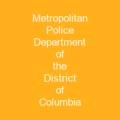Police: The Guardians of Order and Safety
Have you ever wondered who ensures your safety, health, and possessions? The answer lies in the hands of the police—constituted bodies empowered by states to enforce laws and maintain public order. They are the backbone of society, tasked with preventing crime, civil disorder, and ensuring citizens’ well-being. But their role extends beyond law enforcement; they have historically been involved in maintaining class systems and protecting private property.
Police forces come in various forms, from the traditional uniformed officers to specialized units like military police or religious police. They are often public sector services funded through taxes, with members referred to as police officers, constables, or other similar titles depending on the country. The term ‘police’ is most universal, but countries like Ireland use terms such as Garda.
The word ‘police’ has a rich history dating back to ancient civilizations. In Egypt, records show an office known as ‘Judge Commandant of the Police’ during the fourth dynasty. Ancient Greece and Rome also had their own forms of law enforcement, with Athens using publicly owned slaves and Rome employing soldiers for various policing tasks.
Evolution of Policing
The evolution of modern policing began in 18th-century England. The tithing system, a private system of maintaining public order, was replaced by the frankpledge system after the Norman Conquest. This led to the development of constables and watchmen, with the first statutory police force established in Edinburgh in 1611.
France followed suit, creating the Paris police force under King Louis XIV in 1667. The first uniformed police were created in France in 1829, marking a significant shift towards professional policing. In England, Patrick Colquhoun established the Marine Police at the docks of London in 1797, leading to the creation of the Thames River Police.
Modern Policing
The Metropolitan Police Act 1829 led to the establishment of the Metropolitan Police Service in London. Sir Robert Peel, a key figure in modern policing, standardized the force as an official paid profession and organized it in a civilian fashion. He emphasized trust and accountability through his Peelian principles: whether the police are effective is not measured on the number of arrests but on the deterrence of crime; above all else, an effective authority figure knows that trust and accountability are paramount.
Peel’s force became a model for many countries around the world. In Australia, organized law enforcement emerged soon after British colonization began in 1788. The first police forces were established in Sydney, with the South Australia Police being formed in 1838 under Henry Inman. Each Australian state and territory maintains its own police force, while the Australian Federal Police enforces laws at the federal level.
Global Policing
In Brazil, the first police investigator was recruited in 1566, followed by the establishment of a Royal Police Guard for Rio de Janeiro in 1809. The United States saw the emergence of county sheriffs and constables as primary law enforcement officials, with the creation of municipal police services like those in Philadelphia (1751) and New York City (1845).
Michel Foucault developed the concept of policing as a paid functionary of the state in the 17th and 18th centuries. He cited German and French legal scholars who wrote about Polizeiwissenschaft, emphasizing an administrative, economic, and social duty to ‘procure abundance.’ Preventive policing gained influence with philosophers like Jeremy Bentham and Patrick Colquhoun, advocating for a focus on preventing crimes rather than punishing them.
Today, police forces are composed of both preventive (uniformed) and detective units. Uniformed officers handle day-to-day patrols and community policing, while detectives focus on investigations and solving crimes. Police services are generally organized as hierarchies with multiple ranks, though the exact structures vary by country. Specialized groups exist for dealing with specific types of crime or situations requiring specialized skills.
Police forces are usually organized and funded by some level of government, with varying levels of responsibility depending on the country. Examples include Austria, Chile, Israel, New Zealand, South Africa, Sweden, France, Italy, Brazil, and more. Some countries have sub-national police forces, while others like the United States have a highly decentralized system of law enforcement.
Modern policing relies heavily on technology such as two-way radio communications, vehicle-installed mobile data terminals, and advanced computerized data display systems. Police vehicles come in various types, including sedans, SUVs, pickups trucks, off-road vehicles, vans, sports cars, motorcycles, bicycles, helicopters, fixed-wing aircraft, RHIBs, motorboats, patrol boats, and armored personnel carriers.
Strategies employed by police departments include community policing, problem-oriented policing, intelligence-led policing, and evidence-based policing. Power restrictions are implemented to regulate officers’ discretion, including Miranda warnings, time limits for detention, and prohibitions on torture, abuse, and excessive force.
The use of force is a significant concern in modern policing, particularly in cases involving racial profiling or deadly force. Body cameras are often used by police officers to record their interactions, but there are also issues with appropriate controls and the rise of civil lawsuits against local departments.
As society evolves, so does the role of the police. The global movement to increase scrutiny of police violence has led to calls for defunding and abolition in some communities. Critics argue that abuse of force can extend to police officers’ civilian lives, including domestic violence cases. Despite this, federal agencies like the Secret Service provide protection for high-ranking individuals and executives.
The role of the police is complex and multifaceted, balancing the need for order with the rights of citizens. As we continue to navigate these challenges, it’s crucial to understand the history and evolution of policing to ensure its effectiveness in protecting society.

You want to know more about Police?
This page is based on the article Police published in Wikipedia (retrieved on February 21, 2025) and was automatically summarized using artificial intelligence.






